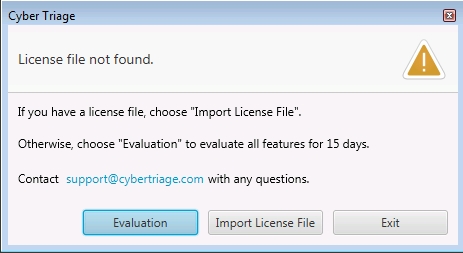1. Standard Installation¶
This section outlines how to install the Standard (desktop), Standard Pro, and Lite versions of Cyber Triage®. If you have the Team (client server) version, then refer to Team Installation and Configuration.
1.1. Hardware Requirements¶
The Standard, Standard Pro, and Lite versions of Cyber Triage® require:
64-bit version of Windows 7 or newer
12GB+ of RAM
4+ CPU cores
100GB+ of free hard drive space (SSD recommended)
Display of at least 1366×768
1.2. Software Requirements¶
- MSI Installer:
PsExec 2.2(or newer) if you want to push the Collector to remote hosts over the network.
1.3. Standard Initial Installation Steps¶
These installation steps are for Standard, Standard Pro, and Lite versions of Cyber Triage®. If you are using the Team version (client server), first go to Configuring a Team Environment for an overview of that process.
Cyber Triage® is installed on your analysis system, not on the system being investigated. A separate collection tool, which is called the Collector, will be run on the system being investigated.
Run the MSI installer and choose the default settings. Versions after 3.10.0 will automatically uninstall a previous version.
Launch Cyber Triage® from the Start menu or the Desktop icon.
If you installed Standard or Standard Pro, you will be notified that a license file was not found on your system and you will have a choice to either use the evaluation version or to enter your license key, named something like
cybertriage-license.l4j.

License file not found¶
1.4. Standard Upgrade Steps¶
To upgrade Cyber Triage, simply run the new MSI. With versions after 3.10.0, the previous version will be automatically uninstalled. Previous installers would keep the previous version.
All settings will be retained.
Refer to Upgrading Installations for general upgrade concepts.
1.5. Side-by-side Standard and Lite¶
You can have Standard and Lite installed at the same time. They are considered separate programs. The impact of this is that:
You will need to update them both independently.
Their data is stored separately and therefore, for example, data added with Lite cannot be opened with Standard.